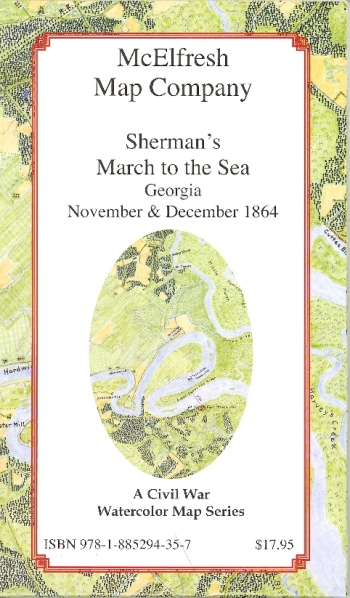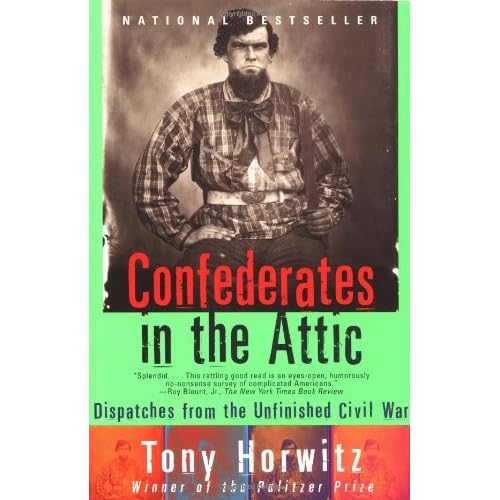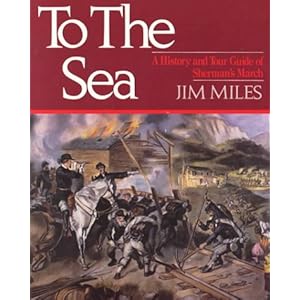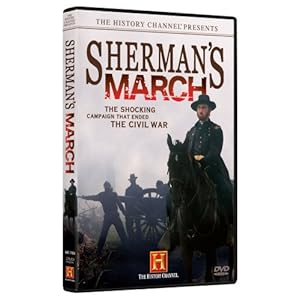I haven't been posting as much lately as I should be. Somehow I got caught up in Gettysburg fever again and got sidetracked. Today I saw a cool story about a captured Confederate flag being returned to Fort McAllister in Savannah, and they'll be having a reenactment in April. May be worth a trip down to Savannah next month to catch it.
Monday, March 26, 2012
Monday, February 27, 2012
McElfresh Map Company
I have been looking over this beautiful watercolor map by cartographer Earl McElfresh. One side shows a detailed look at the area surrounding the march, and the other side features reproductions of maps used by the Union, along with historical tidbits. It's a great reference to have while reading about the march, simply because it shows a lot of the towns and communities that no longer exist. It makes it much easier to put all these different places into perspective.
McElfresh also carries other Civil War maps, including Gettysburg, Antietam, and Shiloh. Beyond the Civil War, they also have maps of Saragtoga, D-Day, and Little Big Horn. It's a great resource for any student of war topography.
McElfresh also carries other Civil War maps, including Gettysburg, Antietam, and Shiloh. Beyond the Civil War, they also have maps of Saragtoga, D-Day, and Little Big Horn. It's a great resource for any student of war topography.
Monday, February 20, 2012
In Search of Redding Hodges
Interesting thing I found out over the weekend - but I need to do more research. A distant relative was doing some digging in the family tree and came up with this a few years ago. My great-great grandfather, Redding Hodges, was in the home guard and was allegedly killed by Sherman's troops in Sandersville, at least according to this relative. I am in the process of finding out where he got this information. This could be an amazing personal tie-in, if it happens to be true.
The problem is that there was more than one Redding Hodges alive at the time, and one of them was a corporal in the 12th Battalion Georgia Light Artillery, Company E. This particular Redding Hodges surrendered with Lee at Appomattox. Not sure if there is any relation to the other Redding Hodges, or ultimately to me, but it sure is intriguing. Stay tuned!
The problem is that there was more than one Redding Hodges alive at the time, and one of them was a corporal in the 12th Battalion Georgia Light Artillery, Company E. This particular Redding Hodges surrendered with Lee at Appomattox. Not sure if there is any relation to the other Redding Hodges, or ultimately to me, but it sure is intriguing. Stay tuned!
Wednesday, February 15, 2012
Confederates In the Attic
It's been a couple of weeks since I've had time to blog, but I've been busy doing more research, including reading this incredible book by Tony Horwitz, Confederates in the Attic. Horwitz basically explores the uniquely Southern obsession with the Civil War, by hanging out with hardcore reenactors and visiting various battlefields.
He also takes a hard look at the racial overtones and unresolved political issues left over from the war, examining the complicated hangups that still linger almost 150 years later. It has been valuable to me, simply because it is helping me gain some focus on the intent of my documentary.
It seems to me that in the case of Sherman's March, a deep and bitter resentment has caused an ongoing willful ignorance in Georgia about the facts of the March. History has been supplanted by myth, and the end result is a population of people who are not aware of the history of their surroundings. I want my film to explore why this has happened, and in the end, show how this is being remedied.
He also takes a hard look at the racial overtones and unresolved political issues left over from the war, examining the complicated hangups that still linger almost 150 years later. It has been valuable to me, simply because it is helping me gain some focus on the intent of my documentary.
It seems to me that in the case of Sherman's March, a deep and bitter resentment has caused an ongoing willful ignorance in Georgia about the facts of the March. History has been supplanted by myth, and the end result is a population of people who are not aware of the history of their surroundings. I want my film to explore why this has happened, and in the end, show how this is being remedied.
Sunday, January 29, 2012
To The Sea!
Found an interesting story about my hometown of Louisville in the book To The Sea by Jim Miles. A couple with the last name of Canning escaped Sherman's troops in Atlanta and Macon by seeking safety at their plantation on the Ogeechee River near Louisville, or so they thought. Foragers from Sherman's left wing came upon them and took Mr. Canning out into the swamp in order to force him into telling where the family money was hidden.
They hung him from a tree by the neck repeatedly, bringing him in and out of unconsciousness, questioning him when he came to. When he insisted there was no money, they took him back to his wife half dead and threatened her life, too. She ended up giving them a gold watch and some silver she had buried. As more troops came through, more threats were made against them until a colonel arrived and gave them assistance.
I have never heard this story until now, and I can't wait to try and find more information about it.
They hung him from a tree by the neck repeatedly, bringing him in and out of unconsciousness, questioning him when he came to. When he insisted there was no money, they took him back to his wife half dead and threatened her life, too. She ended up giving them a gold watch and some silver she had buried. As more troops came through, more threats were made against them until a colonel arrived and gave them assistance.
I have never heard this story until now, and I can't wait to try and find more information about it.
Sunday, January 22, 2012
The Campaign for Atlanta
Just finished reading the Sherman's March portion of this book: an essay entitled "A Sociological Perspective of William T. Sherman's March Through Georgia", by Charles E. Vetter. This is an excellent piece by Vetter, and after reading it I am more convinced than ever that Sherman was a genius. I say this not only because he was successful, but because he obviously learned from his previous mistakes and knew how to refine his strategy for ultimate victory. The march itself turned out to be flawless, because it did exactly what he set out to accomplish. Sherman didn't just want to defeat the South militarily, he wanted to bring the entire Southern population to its knees. The purpose behind the march was to completely destroy the Southern will to fight and wage a war against the Union.
"If the people raise a howl against my barbarity and cruelty I will answer that war is war, and not popularity-seeking. If they want peace they and their relatives must stop war," said Sherman in a letter to Henry W. Halleck in September of 1864. This was before the march, and in the following months Sherman would make this sentiment a reality for Georgia and South Carolina.
"If the people raise a howl against my barbarity and cruelty I will answer that war is war, and not popularity-seeking. If they want peace they and their relatives must stop war," said Sherman in a letter to Henry W. Halleck in September of 1864. This was before the march, and in the following months Sherman would make this sentiment a reality for Georgia and South Carolina.
Thursday, January 19, 2012
The History Channel Version
I ended up watching this documentary by the History Channel again after a few years, if only because a few people have mentioned it to me and I wanted to refresh my memory on it. I think this is good for what it is, but I do have a few critiques of it. Like most dramatic reenactments, the acting leaves a little to be desired - and it's hard to get the scope of 60,000 men marching when they obviously had only a small percentage of that to work with onscreen. It's the nature of the beast when trying to recreate something from nothing, so you can't really hold it against them.
Another thing I want to address here is the generic treatment of the locations. Besides Atlanta and Savannah, the only towns mentioned by name (that I can remember) were Jonesboro, Milledgeville, Griswoldville, and Millen. There are a number of stories involving the dozens of towns along the route, and it seems to be a shame they are neglected.
That brings me to my goals for the documentary. I would like to go a little more in depth on the people and places in between Atlanta and Savannah - not just historically speaking, but also from a contemporary standpoint. What really happened in these towns, and what has lingered in the way of myth and legend 150 years later?
Another thing I want to address here is the generic treatment of the locations. Besides Atlanta and Savannah, the only towns mentioned by name (that I can remember) were Jonesboro, Milledgeville, Griswoldville, and Millen. There are a number of stories involving the dozens of towns along the route, and it seems to be a shame they are neglected.
That brings me to my goals for the documentary. I would like to go a little more in depth on the people and places in between Atlanta and Savannah - not just historically speaking, but also from a contemporary standpoint. What really happened in these towns, and what has lingered in the way of myth and legend 150 years later?
Subscribe to:
Posts (Atom)





